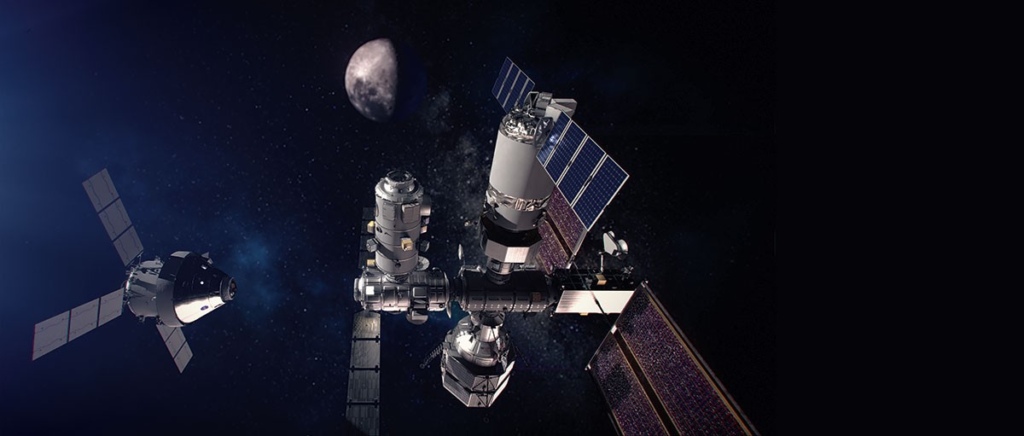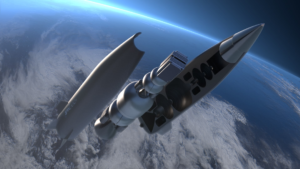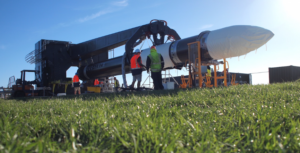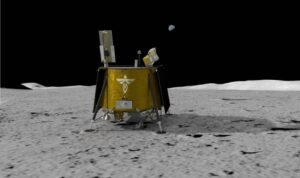
The Future Lunar Space Station Gateway Is Making Progress
After half a century, humans are returning to the Moon once again and this time to stay. Only months ago we watched one of the most significant developments apart of NASA’s Artemis program with the successful maiden launch of SLS. However, while exciting, NASA and other agencies know that an immense amount of space infrastructure is needed for these future Moon missions to be possible.
That is why the first lunar space station named Gateway is being developed as we speak. In the last few weeks, new updates have been released regarding this process and some of the progress Gateway is making. This includes work on delivering mockups for astronaut testing and work to complete the project’s preliminary design review.
The Gateway Program is working to build a small, human-tended space station orbiting the Moon that will provide extensive capabilities to support NASA’s Artemis campaign. Currently, NASA has focused Gateway development on the first two elements of Gateway, the PPE and HALO, which will launch together on a commercially procured launch vehicle. Here I will go more in-depth into some of the recent progress this station has made, why it’s necessary for future operations on the Moon, what to expect in the future, and more.
Gateway Updates

While it seems like these future Artemis missions and Gateway developments are far away in the future, in reality, they are very close. For example, back in 2021, NASA selected SpaceX to provide launch services for the agency’s Power and Propulsion Element (PPE) and Habitation and Logistics Outpost (HALO), the foundational elements of the Gateway. These are the first two main elements that will be launched and have the most work done as of now. After integration on Earth, the PPE and HALO are targeted to launch together no earlier than May 2024 on a Falcon Heavy rocket from Launch Complex 39A at NASA’s Kennedy Space Center in Florida. The total cost to NASA is approximately $331.8 million, including the launch service and other mission-related costs. Assuming everything stays on schedule, some of the first core segments of this lunar station will be orbiting the Moon over a year from now.
Focusing on recent updates, just a few weeks ago on December 16th, NASA tweeted saying, “All together, one last time in 2022. The Gateway Program, including international partners, came together to evaluate the Gateway space station’s design as part of work to conclude Gateway’s Preliminary Design Review, a major milestone on the road toward launch.” Built with international and commercial partnerships, Gateway’s capabilities for supporting sustained exploration and research in deep space include docking ports for a variety of visiting spacecraft, space for crew to live and work, and on-board science investigations to study heliophysics, human health, and life sciences, among other areas. Ideally, Gateway will be a critical platform for developing technology and capabilities to support Moon and Mars exploration in the coming years.
With the first launch of the PPE and HALO segments only getting closer, these two aspects of the station are what NASA has been focusing on. The PPE is a 60-kilowatt class solar electric propulsion spacecraft that also will provide power, high-speed communications, attitude control, and the capability to move the Gateway to different lunar orbits, providing more access to the Moon’s surface than ever before. The HALO is the pressurized living quarters where astronauts who visit the Gateway, often on their way to the Moon, will work. It will provide command and control and serve as the docking hub for the outpost. HALO will support science investigations, distribute power, provide communications for visiting vehicles and lunar surface expeditions, and supplement the life support systems aboard Orion, NASA’s spacecraft that will deliver Artemis astronauts to the Gateway.
In addition, on December 25th NASA tweeted mentioning, “Christmas came early for the Gateway Program! The Habitation and Logistics Outpost mockup was delivered to @NASA_Johnson earlier this week, where @NASAArtemis astronauts will train for future missions to deep space.” While only a mockup, these are some of the necessary initial steps as different segments make progress. Not to mention, right now Artemis IV is making progress with Orion development and upcoming green run testing. This mission will launch multiple modules for Gateway in 2027 and continue to build out the station.
Lunar Space Station Significance

Now that we know more about Gateway’s recent progress and some of the updates from NASA, we can take a closer look at the exact plan for this station and why it’s paramount for future Moon operations. Habitation elements on the Gateway space station will serve as important building blocks. These elements will not only be a home-away-from home for astronauts during extended stays in lunar orbit, but also enable additional capabilities in support of Artemis objectives. Specifically, two habitable elements will provide this pressurized space where astronauts can live and work. Starting with Artemis IV, astronauts will “work from home” with the Habitation and Logistics Outpost (HALO) module provided by Northrop Grumman, and integrated in later missions, the International Habitation (I-HAB) module provided by European Space Agency (ESA). Together these habitable elements will enable astronaut stays of 30 days or more around the Moon.
As astronauts prepare for missions to the lunar surface, they will need deliveries of critical pressurized and unpressurized cargo, science experiments, and supplies like sample collection materials. In March 2020, NASA announced SpaceX as the first U.S. commercial provider under the Gateway Logistics Services contract to deliver cargo and other supplies to Gateway. One logistics services delivery is anticipated for each crewed Artemis mission to Gateway. As a joint project, the main contributors include NASA, the ESA, CSA, and JAXA.
Gateway’s unique near-rectilinear halo orbit, or NRHO, was specifically chosen to help ensure the success of future Artemis missions. NRHO combines the upsides of low lunar orbit (surface access) with the benefits of distant retrograde orbit (fuel efficiency). Hanging almost like a necklace from the Moon, NRHO is a one-week orbit that is balanced between the Earth’s and Moon’s gravity. This orbit will periodically bring Gateway close enough to the lunar surface to provide simple access to the Moon’s South Pole where astronauts will test capabilities for living on other planetary bodies, including Mars. NRHO can also provide astronauts and their spacecraft with access to other landing sites around the Moon in addition to the South Pole. Recently we watched the successful CAPSTONE mission which will provide a lot of invaluable information about this orbit that will be directly applied to Gateway’s future.
In order to support the first crewed mission to the station (Artemis 3) planned for 2025, the Gateway will be a minimalistic mini-space station composed of only the PPE and HALO. After being launched on a Falcon Heavy, they are expected to reach lunar orbit after nine to ten months. The I-Hab module, a contribution from ESA and JAXA, is to be launched on the SLS Block 1B as a co-manifested payload on the Artemis 4 crewed Orion mission. All modules will be connected using the International Docking System Standard.
HALO’s multiple docking ports make it the critical foundation for the fully realized Gateway space station. Additional modules will be added to HALO including I-HAB and the ESPRIT Refueling Module (ERM), both provided by ESA with contributions from the Japan Aerospace Exploration Agency (JAXA); and Gateway’s airlock, provided by a future international partner, that will dock to I-HAB to support extravehicular activity. The same type of docking ports on HALO and I-HAB will also host visiting vehicles like the Orion spacecraft, cargo resupply vehicles to support activities on Gateway and the lunar surface, and lunar landers that will deliver astronauts and their equipment to the Moon’s surface. Structural welding and testing for the HALO module is expected to conclude in Italy in early 2023. HALO will then be transported to Northrop Grumman’s facilities in Gilbert, Arizona, where engineers will begin the installation of various components to get the module ready for flight. Meanwhile, ESA is progressing the design for I-HAB, including its essential Environmental Control and Life Support System that will sustain astronauts during their stays on Gateway.
“NASA is building the infrastructure to expand human exploration further out into the solar system than ever before, including Gateway, the lunar space station that will help us make inspirational scientific discoveries at and around the Moon. Just as importantly, these investments will help NASA carry out the United States’ horizon goal: to further develop and test the technology and science needed for a human trip to Mars,” said NASA Administrator Bill Nelson. “The HALO is a critical component of Gateway, and this exciting announcement today brings us one step closer to landing American boots on both the Moon and Mars.”
Conclusion
NASA is getting closer to its first Gateway segment launch in 2024 with SpaceX. These two initial segments will create the first lunar space station and work to facilitate an ambitious lunar future. In order to support living on the Moon and staying for long periods of time, NASA and the other agencies involved believe this station is the answer. We will have to wait and see how it progresses and the impact it has on the space industry.



